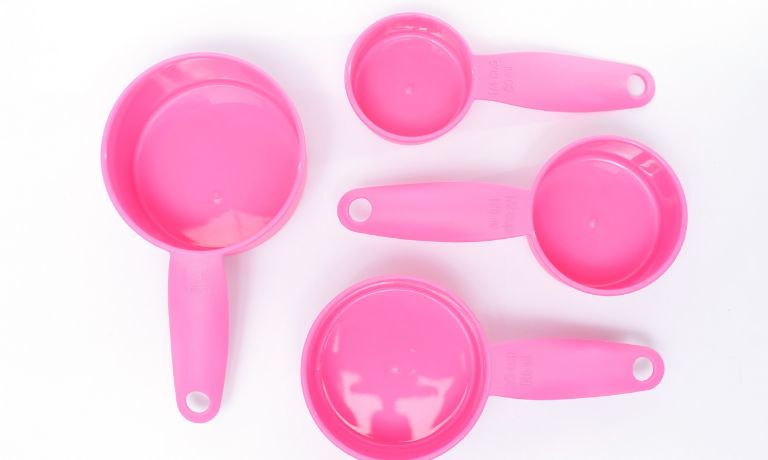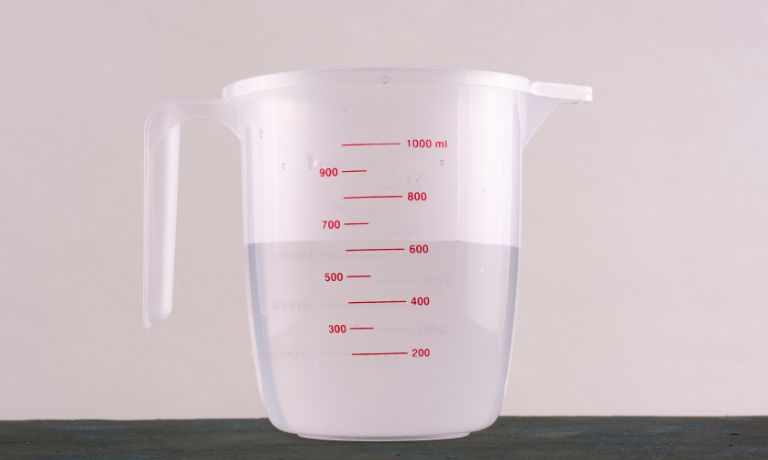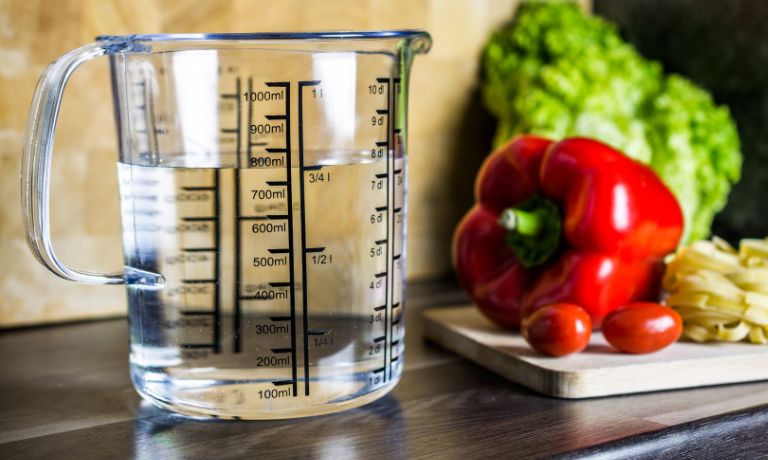Are you curious about how many cups are in 750 ml? It can be confusing to measure liquids accurately, especially when shopping for supplies for your business or restaurant. So, when dealing with liquids such as water and oil, having an exact conversion rate from milliliters to cups can be extremely useful.
In this blog post, we will explain why these two different measurement systems work together so well and how best you can use them in your day-to-day activities. By the end of this post, you’ll know just what it takes to convert quickly and confidently.
What Is A Cup?
A cup is one of the most common units of measurement for volume, typically equal to 8 fluid ounces. A cup is also traditionally used in cooking recipes to measure ingredients like flour and sugar.
Cups can come in various sizes, from a very small child-size cup to a large 12-ounce mug. A standard cup usually holds around 240 milliliters of liquid, although this can vary depending on the size and shape of the cup.
Measuring cups usually have spouts or handles that make it easier to pour liquids into them accurately. While there are many types of measuring cups available today, they all serve the same purpose – helping you measure out ingredients with precision when baking or cooking.
Cups are also commonly used in chemistry and other scientific experiments to measure volume accurately.

Cups
What Ml Stands For?
Ml stands for milliliters, which is a unit of measurement used to measure volume. Milliliters are typically abbreviated as ml and correspond to one-thousandth of a liter.
In other words, 1 mL is equal to 0.001 liters or 0.0338 fluid ounces. Milliliters are often used when measuring small amounts of liquid such as in cooking recipes or scientific experiments.
For example, if a recipe calls for 2 ml of lemon juice, it means you should add 2 milliliters of lemon juice to the mix. Similarly, if an experiment calls for 500 ml of water, that means you need to add 500 milliliters or half a liter of water to the mixture.
Milliliters are also commonly used to measure the dosage of medications, as they provide a more precise measurement than larger units.
What Are 750 Milliliters?
750 milliliters (ml) is equivalent to 0.75 liters, or 2.64 fluid ounces. So if a recipe calls for 750 mL of water, it means you should add 750 milliliters or three-quarters of a liter of water to the mix.
Likewise, if an experiment calls for 500 mL of alcohol, you would need to measure out 500 milliliters or half a liter of alcohol.

Milliliters
How Many Cups Are In 750 Ml?
There are approximately 3 cups in 750 milliliters (ml).
To convert ml to cups, divide the ml by 236.59, which is roughly equal to 1 cup. This means that 1 cup is equivalent to 236.59 milliliters and 750 milliliters would be equal to 3.17 cups (approximately 3 cups).
How Many Cups Are In 750 Ml Dry Ingredients?
When measuring out dry ingredients such as flour, sugar, and rice, 1 cup is equal to approximately 125 milliliters (ml). Therefore 750 ml would be equal to 6 cups of dry ingredients.
This means if a recipe calls for 6 cups of flour it will likely require around 750 mL of the ingredient in total. Remember that when measuring out dry ingredients, the amount can vary slightly due to differences in packaging or other factors.
For this reason, it is better to use an accurate kitchen scale when measuring out your ingredients for recipes. With the right measurements, you’ll be able to create delicious dishes that will please everyone in your family or friends.
How Many Cups Are In 750 Ml Liquid Ingredients?
When measuring out liquid ingredients such as milk, oil, and water, 1 cup is equal to approximately 250 ml. Therefore 750 ml would be equal to 3 cups of liquid ingredients.
This means if a recipe calls for 3 cups of milk it will likely require around 750 ml of the ingredient in total. However, some liquids may vary slightly in density or viscosity compared to others which can affect the overall measurement.
For example, honey has a higher viscosity than water so it would require more honey to measure out the same amount of the liquid.
ALSO READ: How Many Cups Is 32 Oz? Convert Between Ounces And Cups
What Are Some Of The Benefits Of Using Cups In 750 Ml Measurements?
Using cups in 750 ml measurements has several benefits:
Firstly, it is a common measurement that is easily recognized and understood by most people.
Secondly, it can be easier to measure out ingredients with a cup than with other units such as milliliters or liters, because you can “eyeball” the amount more accurately.
Thirdly, using cups for measurements helps make baking recipes more consistent between batches since all bakers use the same unit of measurement when making their creations.
Finally, using cups makes it simpler to compare amounts between different recipes if they are written in different units; for example, if one recipe calls for 750 ml and another for 3 cups of liquid then you know that both recipes are asking for the same amount of liquid.

Measuring cup
How Do You Convert To Cups In 750 Ml?
To convert 750 ml to cups you will need to divide the milliliters by 250, since 1 cup is equal to approximately 250 ml.
For dry ingredients, however, you will need to divide the milliliters by 125, as 1 cup is equal to approximately 125 ml. Therefore 750 ml would be equal to 6 cups for dry ingredients.
To ensure your measurements are always accurate, it’s best practice to use a kitchen scale when measuring out ingredients for recipes.
FAQs
What Is The Difference Between A Cup And An Oz?
The main difference between a cup and an ounce (oz) is that a cup is a unit of volume, while an oz is a unit of weight or mass.
A cup is typically equal to 8 fluid ounces or about 240 milliliters, so it can be used to measure out ingredients such as flour or sugar for recipes.
On the other hand, an oz is traditionally used to measure items by weight instead of volume. This means that 1 oz will always weigh the same regardless of what it’s made up of; for example, 1 oz of lead will weigh the same as 1 oz of feathers.
Ounces are also commonly used to measure out medications, as they provide a more precise measurement than larger units like pounds or kilograms.
What Is A Measuring Cup Used For?
A measuring cup is an essential kitchen tool that is used to measure ingredients accurately when cooking or baking.
It usually comes with markings that indicate various measurements in both metric and imperial units, making it easy to determine how much of each ingredient you need.
Measuring cups often come in sets of multiple sizes so that you can measure out small amounts of ingredients like spices, as well as larger amounts such as flour.
There are also specialized measuring cups designed for specific types of liquids, such as a graduated cylinder for measuring out large volumes of liquid or an espresso shot cup for precise measurements of coffee.
Measuring cups can also be used to measure out precise quantities of medication dosages, which is why they’re often found in pharmacies and medical settings.

Can I Convert Ml To Oz For Measuring?
Yes, you can convert milliliters to ounces for measuring ingredients.
1 oz is approximately 30 ml so if your recipe calls for 8 oz you would need to measure out 240 ml.
Does 250 Ml Make Up A Cup?
Yes, 250 ml is equal to 1 cup.
Is 750ml Equivalent To 75cl?
Yes, 750 ml is equivalent to 75 cl. This measurement is commonly used in Europe and Australia when measuring liquid ingredients for recipes.
Is 750ml The Same As 1 Liter?
No, 750 ml is not the same as 1 liter. One liter is equal to 1000 ml so 750 ml would be slightly less than a full liter.
How Many 750 Ml Bottles Of Water Should I Consume Each Day?
It’s recommended to drink 8-10 cups of water per day, which is roughly 2-2.5 liters or 4-6 750 ml bottles. It’s important to stay hydrated throughout the day in order to stay healthy and energized.
What Does 1 Cup In Ml Mean?
One cup in milliliters is equal to approximately 240 ml, so if your recipe calls for 3 cups of liquid you would need to measure out 720 ml.
Can I Use A Teaspoon To Measure Ml?
No, it’s not recommended to use a teaspoon or tablespoon to measure milliliters as these measurements are too small and won’t result in an accurate measurement.
Instead, it’s best practice to use a kitchen scale or measuring cups/spoons depending on if the ingredient is dry or liquid.
Conclusion
So, 750 ml is equal to 3 cups. It’s important to use the correct amount of each ingredient as well as accurate measurements when making a recipe in order to get the desired results.
Understanding how many cups are in 750 ml can make cooking or baking recipes much easier. Using a kitchen scale and measuring milliliters is the best practice for accurately measuring liquids while measuring cups or spoons should be used for dry ingredients.

